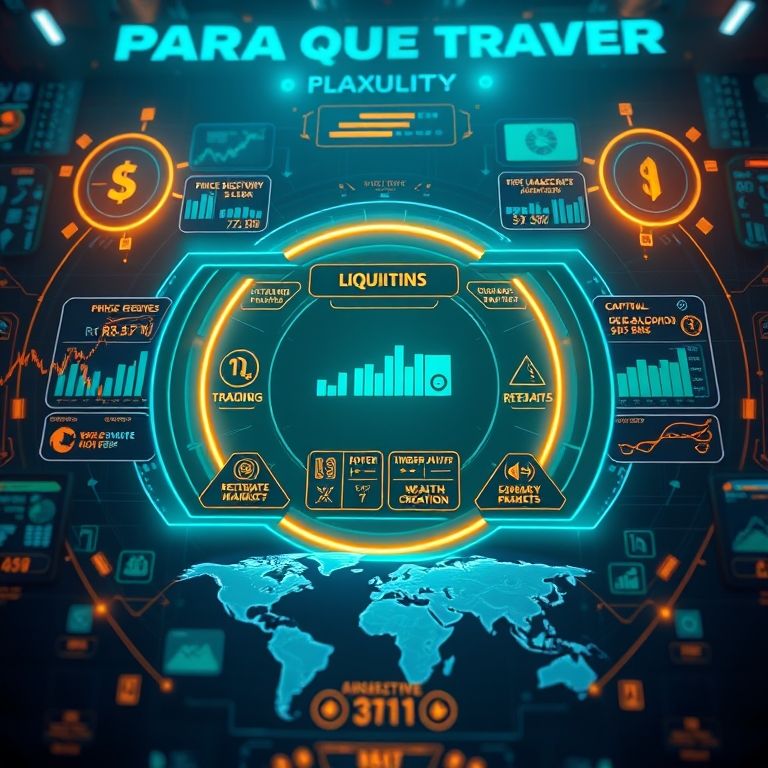para que sirve trading
Para que sirve trading: A Practical Guide for the Web3 Era
Introduction
You wake up to a screen full of quotes, and an old question taps your shoulder: para que sirve trading? It isn’t just about chasing quick moves; it’s a way to participate in a global flow of value, hedge real-world exposures, and learn how modern markets work. In a Web3 world, trading blends traditional assets with digital ones, backed by smarter technology and new forms of custody. The goal? Turn information into action with clarity, tools, and safeguards that fit real life, not hype.

What trading is for in today’s markets
Trading serves several practical purposes that individuals feel in their daily routines. It helps you:
- Access price discovery across assets—from currency pairs to shares, crypto, indices, options, and commodities.
- Hedge risk you face at work or in your portfolio, like currency swings for a international salary or a shift in commodity costs.
- Allocate capital efficiently, using liquidity to shift exposure as your plans change.
- Learn by observing how markets respond to news, data releases, and macro shifts, building intuition you can apply beyond a single trait.
Assets you can trade and why they matter
- Forex: real-time currency exchange, useful for expatriates, travelers, and exporters who want to manage currency risk.
- Stocks: fractional access and diversified exposure to sectors you understand—tech, healthcare, energy, etc.
- Crypto: programmable money and new liquidity pools; volatile but increasingly integrated with traditional finance.
- Indices: broad market exposure through a single instrument, useful for risk management and correlation insights.
- Options: flex for hedging or nuanced bets on direction and volatility, with defined risk after premium payment.
- Commodities: raw inputs like gold, oil, or agricultural products, often used as inflation hedges or diversification anchors.
Features and advantages traders notice
- Broad liquidity across markets means tighter spreads and more reliable entry and exit.
- 24/7 access in crypto and around-the-clock liquidity in major FX pairs offer flexibility for different schedules.
- Fractional and tokenized assets lower barriers, letting you experiment without a big upfront commitment.
- Advanced charting and analytics, with real-time data streams, empower more informed decisions.
- Ecosystem tools—secure wallets, risk controls, and educational resources—help you build a personal trading routine.
Navigating safety, leverage, and risk management
Leverage can amplify gains, but it can also magnify losses. Practical guardrails include:
- Protect capital with strict position sizing: only risk a small portion of your total trading bag per trade.
- Use stop orders and take profits to translate your plan into action, not emotion.
- Diversify across assets and strategies so a single event won’t wipe you out.
- Keep your core funds in safer custody (offline storage or reputable wallets) and trade with platforms that prioritize security audits and transparency.
- In Web3, stay mindful of smart contract risk, wallet safety, and protocol incentives that change over time.
Tech stack, security, and charting support
In today’s workflow, traders rely on a mix of:
- Charting tools with multi-timeframe views, technical indicators, and alert features.
- Non-custodial wallets and hardware devices to reduce counterparty risk.
- Layer-2 and cross-chain solutions to manage gas costs and access different markets.
- DeFi protocols with liquidity pools, staking opportunities, and programmable rules, all vetted by community audits and independent reviews.
- Chart-backed decision-making: backtests, scenario analysis, and live monitoring help keep plans aligned with reality.
DeFi development: challenges and opportunities
Web3 trading unlocks decentralization, but it isn’t without bumps. Gas fees, latency, andacles’ reliability can affect execution. Smart contract bugs and protocol upgrades add risk, while regulatory clarity remains evolving. Yet the upside is real: permissionless access, programmable money, and transparent transaction trails can redefine how people invest and hedge.
Future trends: smart contracts, AI, and beyond
Smart contract trading is moving from a neat concept to a practical toolkit: rules encoded in code, executed automatically, with on-chain data powering decisions. AI-driven signals and autonomous agents promise faster analysis and more adaptive strategies, while on-chain analytics and risk dashboards give traders a fuller picture. The best setups blend human judgment with machine precision, all while aligning with sound security practices and clear risk controls.
Promotional vibe and closing thought
para que sirve trading isn’t just a slogan; it’s a doorway to informed participation in a modern financial landscape. Start small, test ideas in a safe environment, and layer in tools as you grow. The Web3 era invites you to trade with purpose, precision, and prudence—turning information into actionable steps and every chart into a story you can own. Ready to explore the possibilities? Your next move could be the one that aligns your everyday life with a smarter financial rhythm.
YOU MAY ALSO LIKE